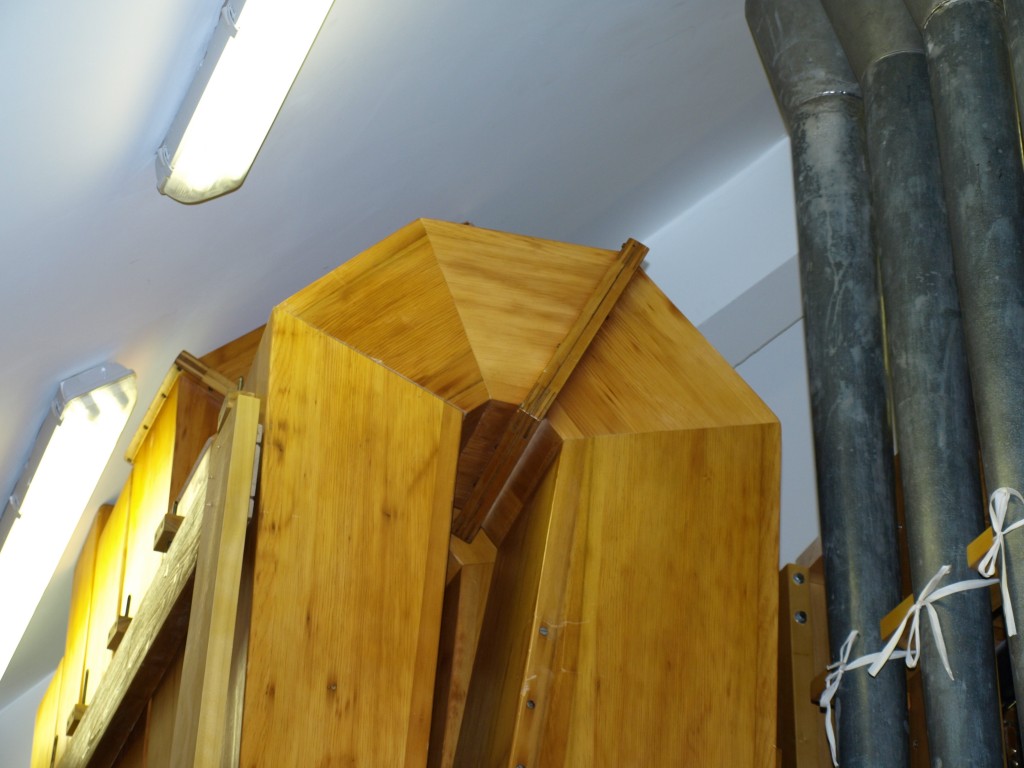The section on pipework describes the shape of organ pipe resonators; most commonly of parallel or inverted conical form. Bass pipes may be 16′ long; in order to reduce the headroom of organ chambers, organ builders make use of an acoustic phenomenon whereby a pipe resonator may be ‘folded’ (by means of careful cutting and joining) on itself without unduly affecting the tone. This can be likened to the shape of some brass instruments, eg. the Trombone.
The most common examples are Tuba and Diaphone basses, whilst the bottom octaves of open flues (particularly Diapasons or Strings) may be mitred at a right-angle to be accommodated within the chamber headroom.

See further:
